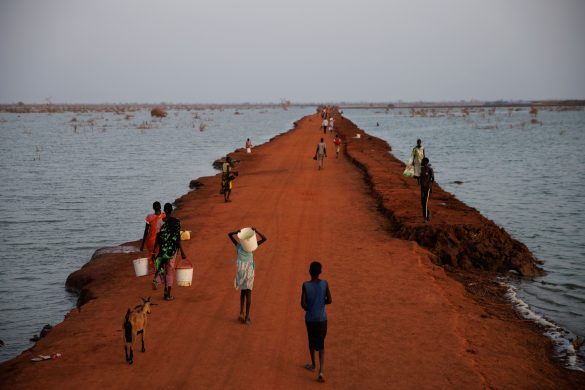Et regnestykke og en slags status her et år efter de gigantiske oversvømmelser i det sydasiatiske land
ROME, 27 July 2011: The floods that struck Pakistan starting in July 2010 represented one of the most devastating natural disasters of our times.
Water submerged almost one-fifth of the country – an area the size of Greece – killing 2.000 people, affecting 20 million and destroying 1,6 million homes.
Damage to agriculture – the basic livelihood for 80 percent of the affected population – was estimated at more than 5,1 billion US dollar, including the loss of over two million hectares of crops. The devastated area included the breadbasket province of Punjab and much of Pakistan’s most fertile land.
The disaster struck at a crucial point in the agricultural calendar – just before the harvest of spring-planted crops and within weeks of the critical winter wheat planting season.
Livestock surviving the floodwaters lacked feed, veterinary support and shelter.
With existing and future sources of food and income washed away, humanitarian aides raced against time to prevent a domino effect.
Floods Response Programme
A year later, those efforts have proven successful. Today, thanks to interventions under the international Floods Response Programme some 900.000 smallholder households – more than seven million people – are back on their feet again.
Funded by 92 million dollar of donations, FAO’s efforts focussed as a matter of priority on winter planting of wheat and vegetables and on spring planting of maize and rice as well as vegetables.
Support was provided to preserve vital livestock resources and on-farm irrigation systems were repaired.
Almost half a million households were provided with wheat and vegetable crop packages. They yielded 650.000 tonnes of wheat – twice as much as traditional seeds and enough to feed more than four million people for at least six months.
In addition, the average family sold almost a third of their harvest, generating 116 dollar of cash income.
From the onset of the floods, more than 200 organizations joined efforts through the Agriculture Cluster, led by FAO, to respond to immediate and critical challenges with the support of the donor community.
Costs saved
The total cost of FAO’s winter wheat intervention was around 54 million dollar. Buying the same quantity of wheat grain on the local market would have cost almost four times as much.
Other interventions included assistance to women to grow fresh, nutritious food in their own kitchen vegetable gardens. FAO provided individual families with vegetable kits, each of which yielded an average 500 kg of vegetables.
This bridged the gap before the wheat harvest in late spring and surplus production sold on the local market providing valuable income which families used to meet other basic needs.
Livestock support
Over 290.000 families received support from FAO for their livestock – an area in which women play a crucial role. This helped to keep over one million animals alive and healthy during the 2010-11 winter until green fodder became available.
Farming families are benefiting from repaired and cleaned on-farm irrigation channels from over 1.000 cash-for-work schemes. This was vital for the winter wheat crop, as well as for crops planted in the spring, particularly rice.
Urgent support still needed to restore rural livelihoods
Despite the above successes, much remains to be done to further restore rural livelihoods and to significantly reduce vulnerability, improve food production and income generation, and increase the resilience of rural communities to future shocks.
FAO’s Early Recovery Programme requires 96 million dollar to support an additional 430.000 farming households in 14 severely flood-affected districts of Pakistan over the next two years.
Kilde: www.fao.org














